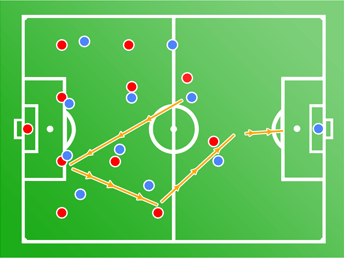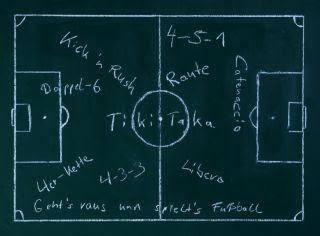
Introduction
Soccer tactics used by the top football teams today have grown increasingly complex. Tactical drills are used in football training sessions to develop an understanding of the tactics to be used in games. Nowadays, individual weaknesses in the opposition are researched ahead of time and exploited through soccer strategy. Players have to specialize in a particular position which they begin learning from an early age
A soccer coach is supposed to balance the players on his own football team according to their attributes while keeping in mind the enemy’s strengths and weaknesses.
And that is why we will go through steps of analysis as an efficient tool which can be so helpful with training and tactics

Analysis to enhance tactics
Tactical analysis is a specific set of activities consisting of the collection, processing and appropriate use of information leading to an understanding of the cause and effect compounds occurring during a football game.
It is a process that is not about describing and making subjective assessments, but rather about careful observation.
Regardless of the form in which the information is processed and presented, videos, graphic presentations or descriptions are intended to lead to the creation of a reference point for the training staff for further, more precise and clearly defined work with the team.
It also offers a visualization of the trainer’s message in relation to the team, thus giving legitimacy to the communication and working methods chosen.
Analysis Steps
The 7 steps in the analysis cycle can be briefly defined as:
- A game – a source of potential information
- Analysis – collection and processing of information for its presentation and further application
- Feedback – presentation of information and its placement in an appropriate context
- Change of perspective – confronting existing knowledge with facts
- Planning and adjustment of the training process – putting the information collected into practice as a reference point for working in a particular direction,
- Training – working based on new information
- Adaptation of training conditions – intensity and work context management
Once you hear about football tactics you will thinks that it’s only applicable with the players, but as per ISSPF “international soccer science and performance” there is 4 areas that should be involved in the tactics training and those 4 areas are:
team tactics which includes
Team Structure
- organization of the game in offensive and defensive phases
- organization of the game in transition phases
- managing the compactness of the setting
Space Management
- depth and width of the game field
- managing the numerical structure in sectors
- increasing or reducing the space within the structure
- trends and directions for constructing team activities
The Distance Between Different Formations Within the Structure
Sectors and Corridors occupied by the team
- creation and use of free spaces
- reactions after gaining or losing a field (progression, regression)
- behavior ‘on the other side from the ball

As we said before, not just the team , we also have
2) Group Tactics, including:
Formation Structure
- width and depth of formation – “amplitude”
- characteristics of positions within the formation
- behavior in relation to the ball, the opponent, free spaces, and other formations
- the compactness and smoothness of formation passages
The Creation of “Small Games” and rotations within or between formations
- item specificity and change process
- support from/to the ball, space support
- influence on ball handling
- characteristics of group activities, which differ between formations
- management of numerical structures (transition between formations)
- trends and directions in the construction of group activities
3) Individual Tactics, including:
The Foundations and Tactical Concepts of the individual positions
- individual training content specific to individual roles (in modern football, functions play a greater role than positions)
- individual behavior regarding external stimuli
- the role of leader from a team tactical point of view
- trends and directions for the construction of individual actions
And finally,
4) Mental attitude
- voluntary features
- level of commitment and ability to maintain the intensity of the game
- resistance to stress, pressure, and fatigue
- managing the sphere of emotions
- verbal and non-verbal communication

Football training tactics is an important part of nowadays football industry, that is why each professional club has its own director of coaching (DOC), who is one of the most important figures within a soccer club or association. They play a key role in defining and monitoring the coaching sessions delivered by potentially hundreds – or even thousands – of individual coaches.
The job of a DOC is to build and develop a strong coaching team. This, in turn, will help individual coaches to get the most out of their players. This might sound straightforward in theory, but in reality the role is extremely challenging and requires a wealth of coaching and management experience.
As a DOC, you’ll likely come from a coaching background, with stints at youth, high school, college, and semi-professional levels, either in the US or Europe. You’ll also possess a well-rounded skill set, incorporating everything from performance management and recruitment, to outlining and reinforcing the culture and playing philosophy across a club or an entire association.
And DOC responsibilities are All day-to-day coaching activities within the respective club or association fall within the remit of the DOC. Individual coaches will deliver the specific sessions, but the DOC is responsible for creating the overarching training programme, setting objectives and reviewing performance.
Finally, training can make any part of football industry growing better, and that is why our platform heyagoal has its own section for coaches and trainers.





